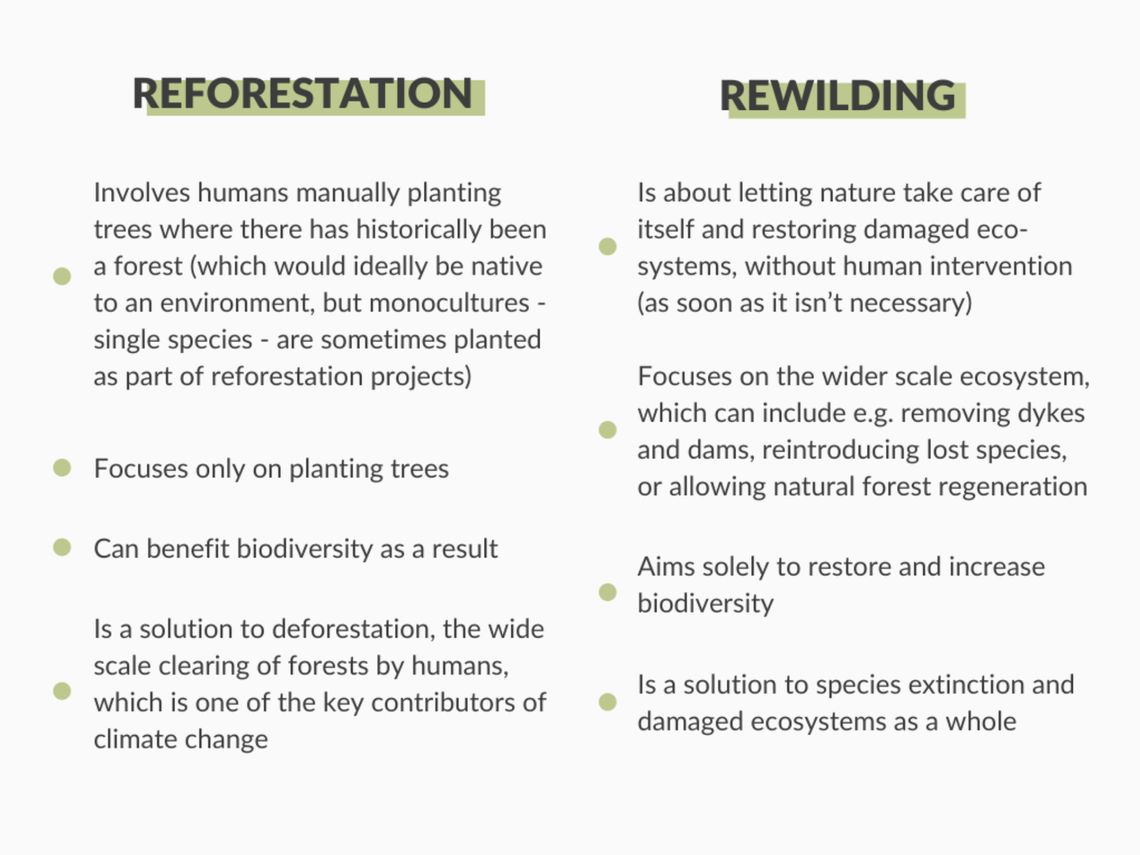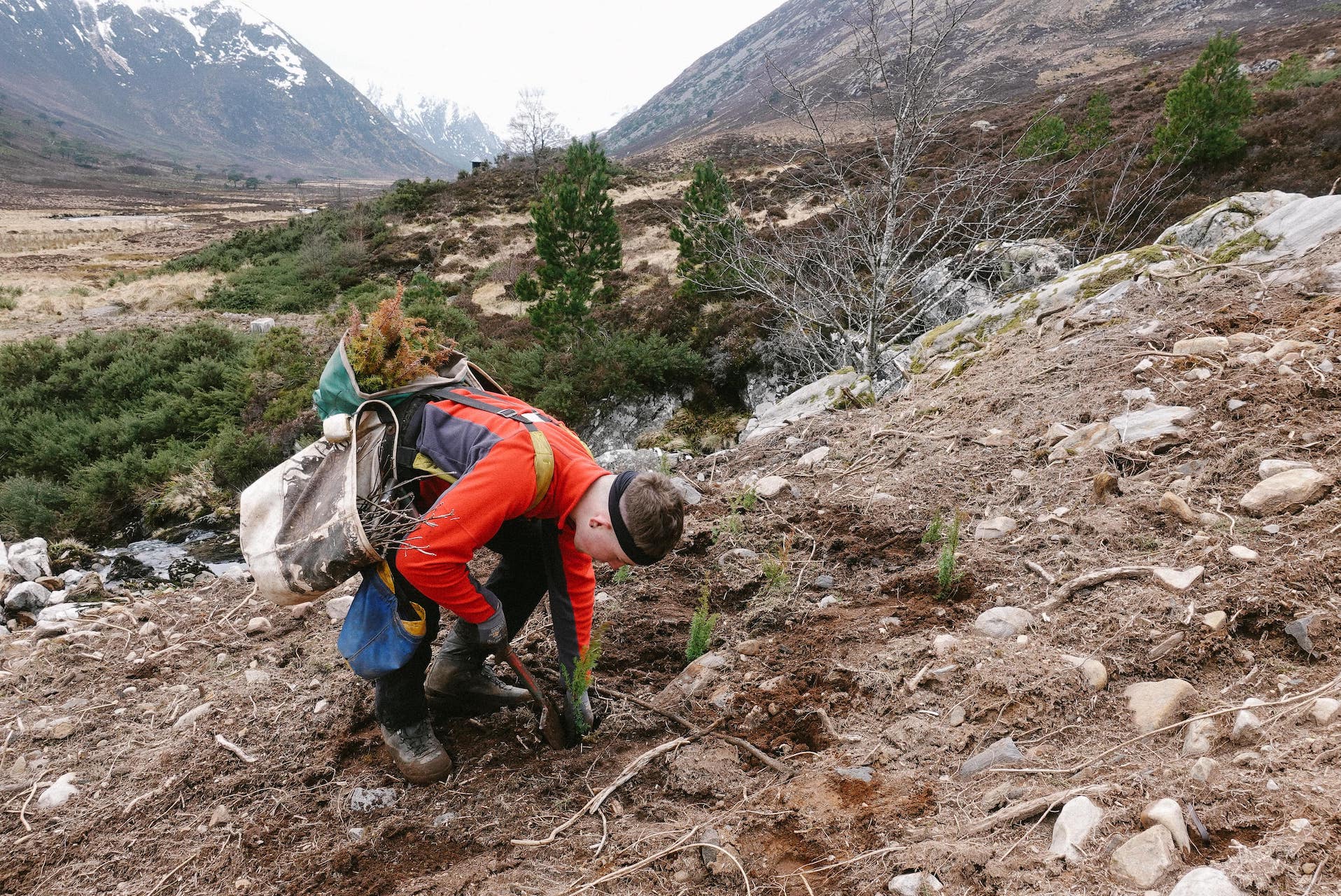There’s no doubt that humans have meddled with nature for far too long. The list of endangered or extinct species of flora and fauna is increasing - and at the rate in which the world’s forests are being destroyed in the name of profit and desire is frankly depressing.
In order to solve these problems that are contributing to climate change, it’s vital that we take a deep look at and understand what fixes we can make. Reforestation and rewilding have been gaining popularity recently, as they are two impactful solutions to these issues. However, the two terms are often used interchangeably and the nuances between them are not that well known. So, let’s take a deeper look:
Reforestation vs. Rewilding: Overview
The difference between reforestation and rewilding is much less complicated than it might seem at first. In simple terms, according to Mossy Earth (a social enterprise involved in both projects):
-
Reforestation is planting native trees and capturing carbon
-
Rewilding is restoring wildlife habitats and supporting biodiversity
A quick visit on their website will easily show you some differences in reforestation projects vs rewilding projects. As an example, planting trees in the great Caledonian Forest in Scotland is one of their reforestation projects, and removing toxic waste in Croatian caves, to help unique creatures of the underworld, is one of their rewilding projects. Let’s break down some differences in characteristics:

Now, let’s look at some of the suggested pros and cons of both, while remembering that it is still relatively early days for both approaches:
Reforestation
Pros
-
Works to restore previous forest cover which has suffered extensive damage
-
Reduces carbon dioxide and is therefore a tool to reverse climate change
-
Restores wildlife habitats and reintroduces lost biodiversity
-
Reduces soil erosion
-
Improves air and water quality
-
Protects human health
-
Empowers indigenous communities who can likely have their land back; this is important because indigenous people are known to be better at protecting forests than governments
Cons
-
Is not always done responsibly and therefore could be counterproductive; introducing non-native trees can be harmful
-
Badly planned reforestation can have negative effects, such as using the wrong method of planting, introducing invasive species, or monocultures which can affect the natural biodiversity of the habitat
-
Can be used by some larger companies to offset their carbon emissions - while allowing them to maintain very high emissions in the first place.
Rewilding
Pros
-
Restores lost species; can slow down or halt the sixth mass species extinction
-
Restores damaged ecosystems and increases biodiversity, which can have a multitude of positive effects
-
Reconnects modern society with wild nature and therefore increases mental and physical wellbeing
-
Helps nature thrive; can create rich natural habitats
-
Reduces carbon dioxide and is therefore a tool to reverse climate change.
Cons
-
Possible failure in execution of rewilding projects can lead to counterproductive effects such as the mass starvation and death of animals
-
Lots of research and proper planning needs to be done in order to avoid failure, e.g. it’s not always clear if a lost species will do well in the environment it’s reintroduced in. To add to this, species who have already adapted to the eradication of other species may react in a negative way to change.
-
The meaning of rewilding is inconsistent often misunderstood
Rewilding vs. reforestation: which one is better?
Both reforestation and rewilding have promising potential for climate change mitigation. Some believe that rewilding is a better solution, and that instead of reforestation, natural regeneration without any human intervention to plant trees would be better. That said, considering that we are in a climate crisis, and natural regeneration isn’t happening fast enough, we should take advantage of the best available options. Both solutions can and do intertwine with each other, as reforestation contributes to restoring biodiversity, as long as native and diverse tree species are planted.
How is POMP involved in reforestation and rewilding, and how can you get involved too?
We’ve recently subscribed to a membership program previously mentioned in this article called Mossy Earth that aims to restore nature and fight climate change. We use profits from our #ShowYourStripes clothing range to fund this membership. So, if you want to get involved too, you can check it out and purchase an article of clothing you love (such as this climate change hoodie in certified organic cotton, perhaps) and you’ll indirectly be helping! And if you want to go the extra mile, you can set up a membership with Mossy Earth yourself directly on their website.




